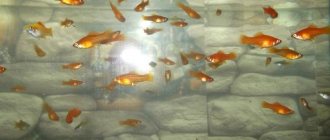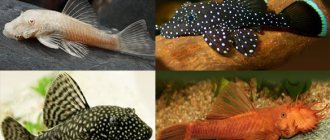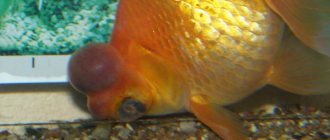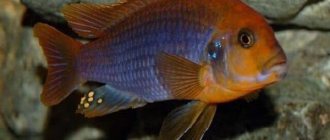Nannostomus beckfordi Gunther, 1872.
Due to its attractive coloration, unique shape and interesting behavior, the species has become popular among aquarists.
Synonyms
Russian: Nannostomus aripirangii, Nannostomus anomalis, Nannostomus suriname Latin: Nannostomus anomalus Steindachner, 1876; Nannostomus aripirangensis Meinken, 1931; Nannostomus simplex Eigenmann, 1909; Nannostomus beckfordi surinami Hoedeman, 1954
Etymology
Nannostomus: From Latin nannus, meaning "small" and Greek stoma, meaning "mouth", referring to the small mouth parts of members of the genus. beckfordi: named after F. J. B. Beckford, who first collected specimens of the species and presented them to the British Museum.
Family: Lebiasinidae Genus: Nannostomus
Range and Habitat
South America: This species is widespread in the rivers of Guyana, Suriname and French Guiana, as well as in the eastern Amazon basin in the states of Amapá and Pará, Brazil.
Specimens have been reported from the Rio Madeira, lower and middle Amazon down to the lower Rio Negro and Rio Orinoco in Venezuela.
Inhabits small rivers with weak currents and swamps, where they are very common, preferring to stay near the banks, especially in areas with dense cover of aquatic vegetation or flooded trees and fallen leaves. Forms groups in which males dominate.
Although wild fish are still exported, many of those sold for aquariums are commercially raised.
Wild populations vary in color depending on origin, and some populations have previously been described as distinct species.
Description
The elongated fusiform body is slightly flattened laterally. The back is reddish-brown, tinged with green, the sides are grayish-yellow, and the belly is white with a silvery tint.
A wide black stripe stretches from the snout to the base of the tail, where it ends in two bright scarlet spots. Along the stripe, both below and above, the fish shimmers in red, gold and purple. The pectoral fins are colorless, the rest with a reddish tint at the base in males, and pale orange or yellow in females. The tips of the pelvic fins are colored milky blue, and the rays of all fins, except the anal, are dark. The throat is silvery. The mouth is very small and narrow. The adipose fin is absent.
At night, the fish almost completely lose their color, become transparent, and three dark oval spots appear on the body: in the middle of the body, near the anal fin and at the root of the caudal fin. They have the ability to change color depending on conditions and mood.
Size:
Maximum standard length 65 mm.
Behavior and Compatibility
It is recommended to keep in groups of 5 or more individuals.
Relatively peaceful, best kept with peaceful neighbors of similar size and small catfish, best avoided by other surface dwellers such as Wedge-bellies, especially in small aquariums.
Dwarf cichlids will be excellent neighbors, as it lives in the middle and upper levels of the aquarium and does not threaten their young.
Solitary confinement or proximity to aggressive fish leads to the fact that he begins to lead a closed and secretive lifestyle.
Buy as many as possible from 10 or more, since with this quantity the fish are more active and less shy, more often visible and have better coloring, and exhibit more natural behavior.
Lifestyle of Nannostomus
Although nanostomuses are more than small in size, they bravely scare away trespassers.
Males fight almost their entire lives for the right to own their territory.
If the fish is in a vertical position, then its status in the school is high, but if Nannostomus is frightened, it immediately takes a horizontal position and hides in the algae.
These are non-aggressive fish that live in the upper layer of water. During the day, Nannostomus drift slowly and look like a piece of a branch, and in the evening they come to life and begin actively feeding. They forage near the surface, eating small invertebrates and insects that fall into the water. And some nanostomuses dig into the substrate and look for small worms in it. At night they change their color.
Nannostomus are friendly and not aggressive, but very shy fish.
Aquarium
Basic dimensions are at least 45*30cm or equivalent, with a larger aquarium recommended if you want multiple males together. The volume of the aquarium is selected at the rate of 6-7 liters per individual.
Plants are densely planted around the perimeter to provide shelter for the fish. For the same purpose, driftwood and stones should be placed in the aquarium. The foreground remains open for swimming. A layer of fallen leaves is added to the dark soil. The lighting is diffused and can be achieved with the help of several floating plants.
It is recommended to add peat extract to the water.
Water parameters:
Temperature: 23 - 27° C pH: 5.0 - 8.0 Hardness: 5 - 19° dGH
Aeration with weak filtration, a quarter of the water should be changed weekly.
Marginatus
Nannostomus marginatus has three longitudinal stripes of black color running along the body of a whitish-yellow color. These stripes make it possible to distinguish between females and males: in females, the lower stripe is more clearly defined, and their pelvic fins are not completely colored. Males have an intense additional red coloration, especially on the fins. This nanostomus is smaller than its fellows: it grows up to 4 cm.
How to keep
Nannostomus marginalatus needs at least a 40-liter aquarium that has plenty of plants but plenty of room for swimming.
The water parameters needed are:
- 23-25 degrees – temperature;
- acidity in the range of 5.8-7.2. Although the optimal value is 6.0-6.8;
- hardness can be up to 15 degrees, but the best option is 8 degrees.
Nannostomus marginalatus prefers to feed on cyclops and small daphnia; they readily eat tubifex and small bloodworms. Feeding with dry combined food is also possible.
Return to content
Nutrition
In nature, it feeds on the smallest invertebrates and other zooplankton.
The aquarium accepts Artemia nauplii, fruit flies, daphnia, bloodworms, grindal worms, tubifex, cyclops and coretra. Food, both dry and live, should be well chopped. They prefer not to take food from the bottom.
If you feed it fruit flies before spawning, it will not have the desire to eat its eggs.
Feeding
The food should be small, since even for their size these fish have very small mouths. As for live food, they readily eat artemia, daphnia, fruit flies, mosquito larvae, tube worms and small plankton.
Dry foods in the form of flakes or granules that remain on the surface of the water for a long time are also eaten, but only if the fish are not brought from nature.
Breeding
Under favorable conditions in the aquarium, fry may appear without your participation, but in this case there is a high risk of their death.
If you want to increase their numbers, a slightly more controlled approach is required.
Before placing these fish in a breeding aquarium, the males and females should be separated a few days before. Increased feeding of live food increases readiness for spawning.
Spawning tank from 5 liters, if spawning is paired. They can also spawn in a group consisting of one or two males and several females, although it is worth noting that the more individuals involved, the greater the risk of eating the eggs.
It is better to put a mesh on the bottom. Small-leaved plants should occupy a third of the total space. Java moss, cabomba and cirrus are best. A few floating plants provide diffused, subdued light. Light aeration. To stimulate spawning, the temperature increases gradually.
Water parameters in the spawning aquarium: level about 10 cm, 26-28° C, dH 2-8, pH 6–6.5, peat.
They spawn at night and then hatch. Among thin-leaved plants, eggs are deposited in several batches from 1 to 5 pieces, with a total number of up to 200 eggs in some cases. Within an hour it loses its stickiness and sinks to the bottom. During this period, the spawning tank must be completely darkened.
The eggs are incubated for 1-2 days, and after another 3-5 the fry swim. The fry should begin to be fed with rotifers, ciliates and Cyclops nauplii.
The fry are inactive, covered with dark and whitish spots; in the middle of the body the spots are more frequent and almost merge into stripes.
Life expectancy in an aquarium under favorable conditions is 5-6 years.
Notes
This species is quite common in the aquarium trade and is an excellent choice for beginners in the aquarium hobby as it is less demanding than most of its relatives.
It is sometimes called "Beckford's pencilfish" or "golden pencil".
It exists in several different color forms across the spectrum, of which the following have been described as separate species in the past. All are currently considered synonyms of N. beckfordi.
Nannostomus - All species of this genus are known as pencilfish, a popular name that was first applied to only two species in the 1920s, N. unifasciatus and N. eques, but would be applied to the late 1950s to all representatives of the genus. Some of the species have become popular aquarium fish due to their attractive colors, unique shapes and interesting behavior.
Diseases
Nannostomus Beckford can become ill not only due to improper care of the aquarium. There is also a possibility of infection from contact with sick fish or due to insufficient nutrition, non-compliance with temperature conditions, etc.
But experts have not identified any particularly dangerous diseases that would be attributed to this species. Most novice aquarists are faced with problems in selecting suitable food, since the fish’s mouth is small and the fish cannot swallow large particles of food, remaining hungry day after day. Due to the state of constant forced hunger strike, nanostomuses quickly lose their immunity, weaken and die.











